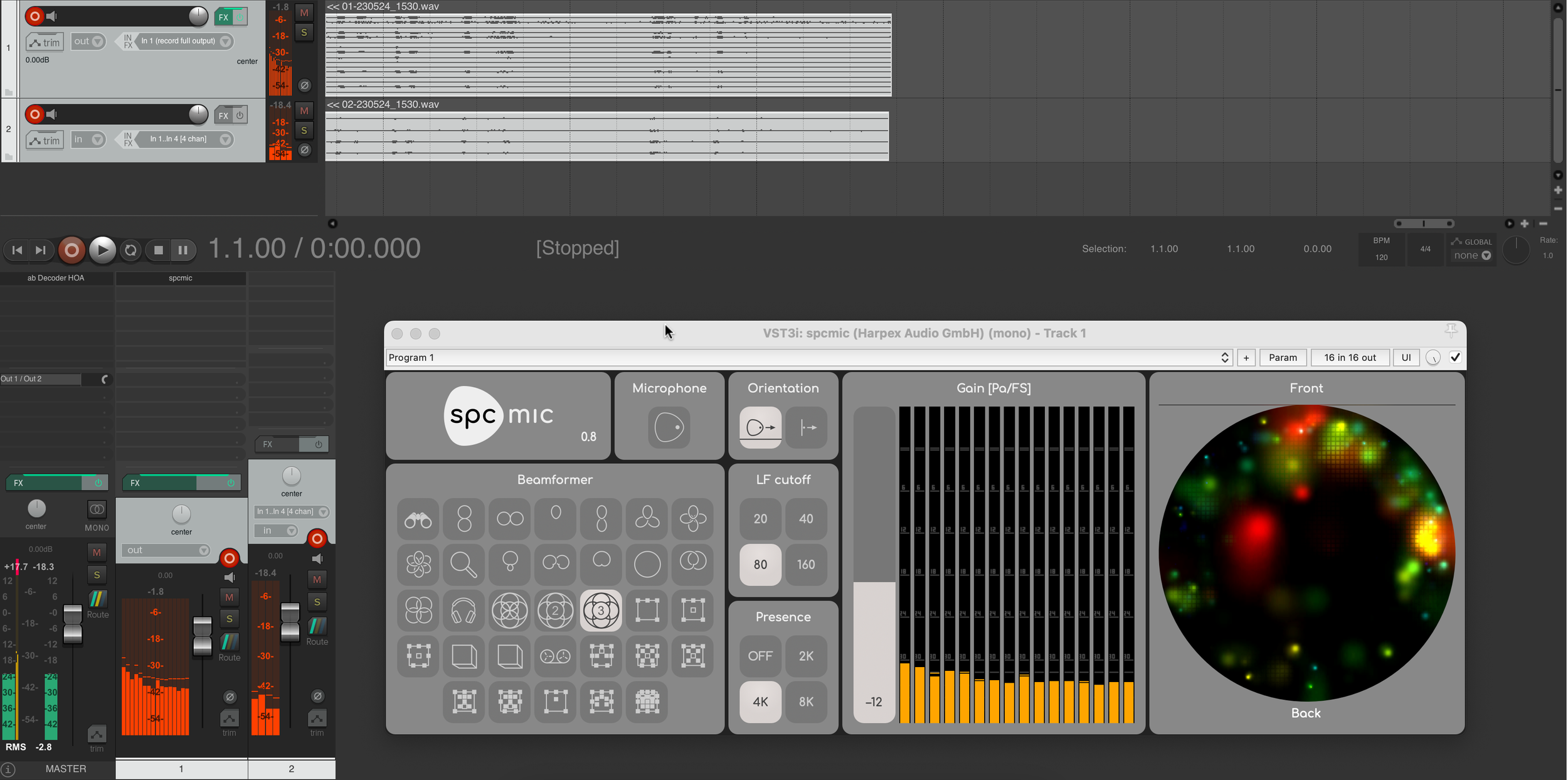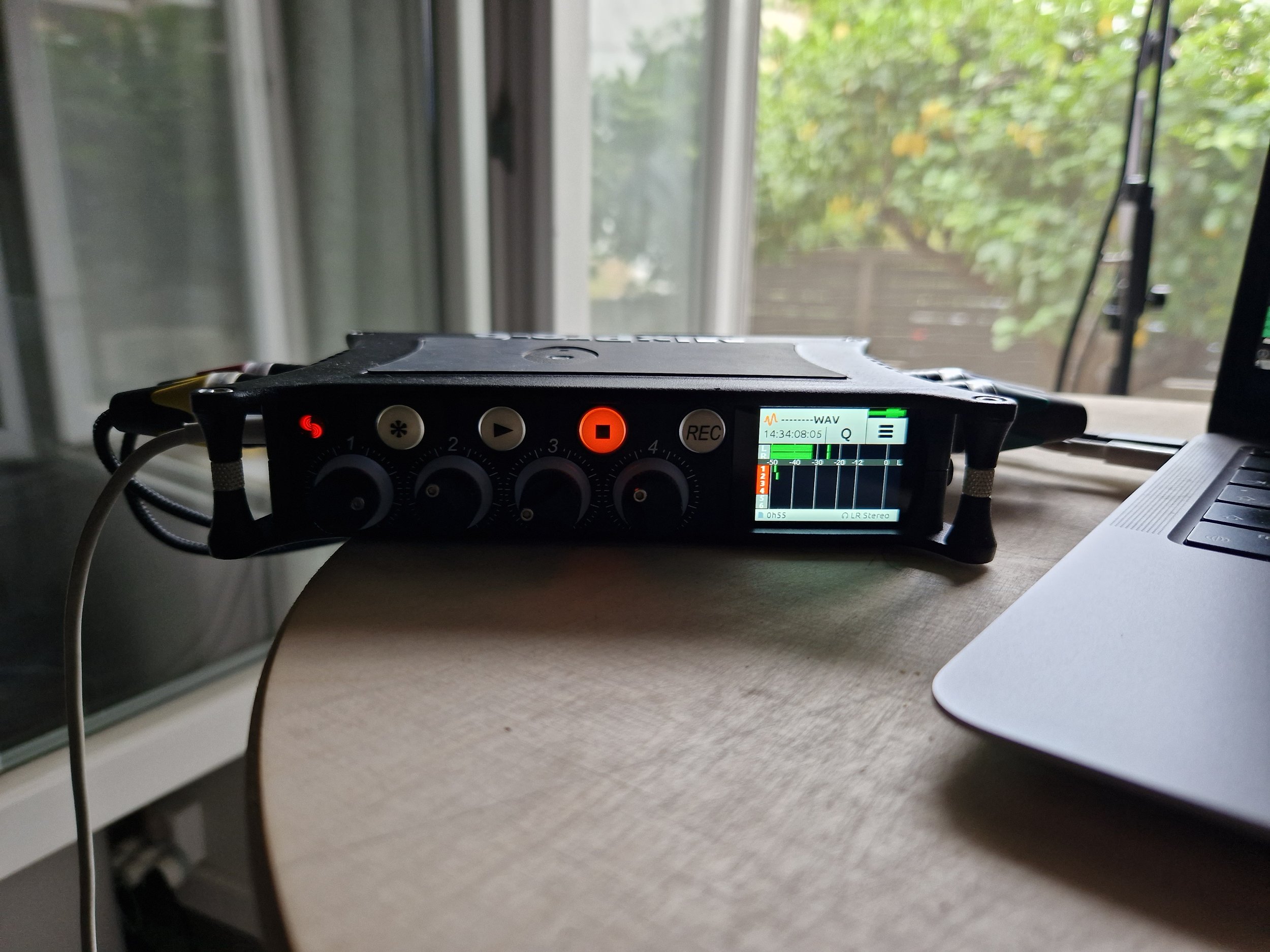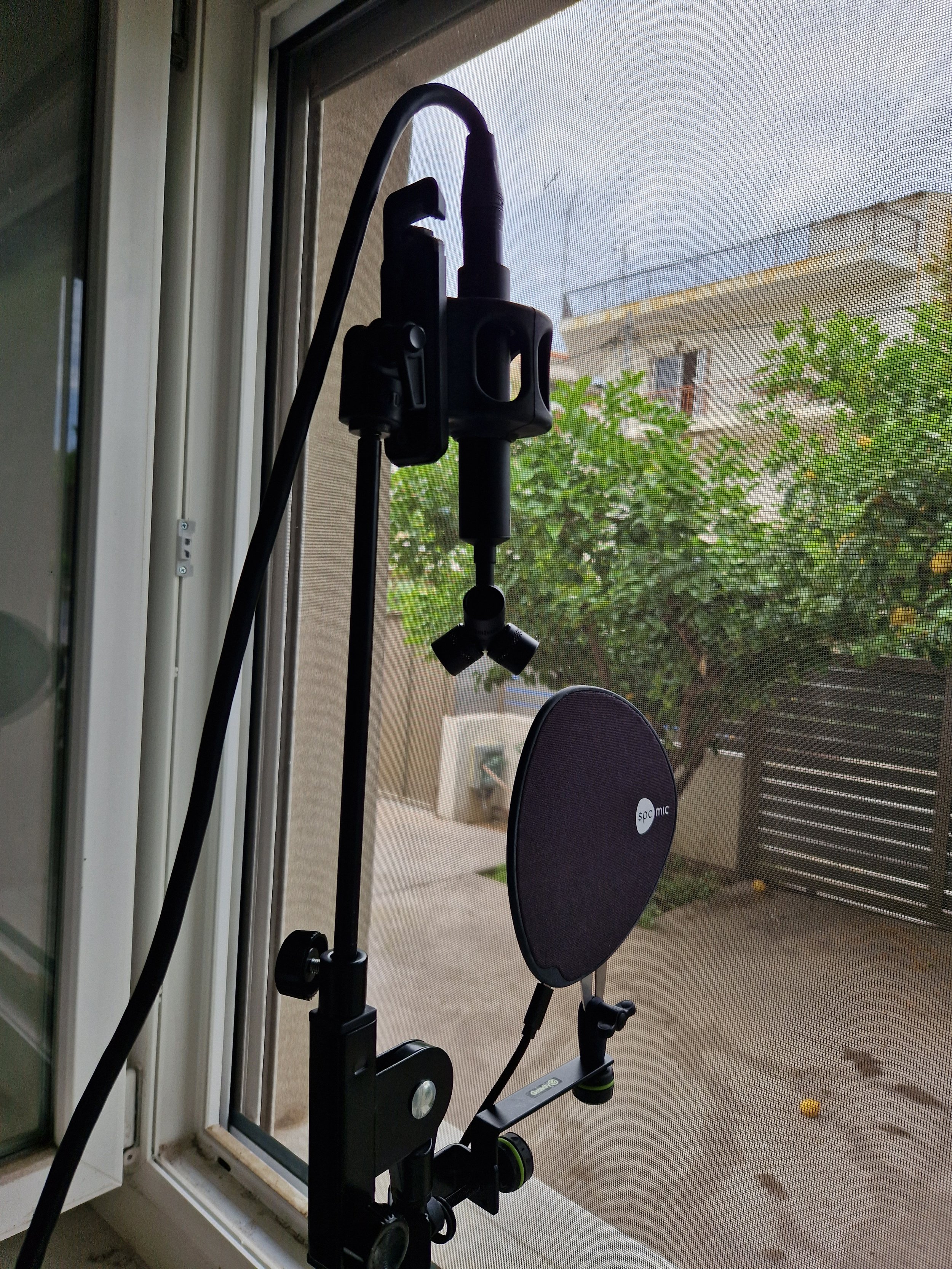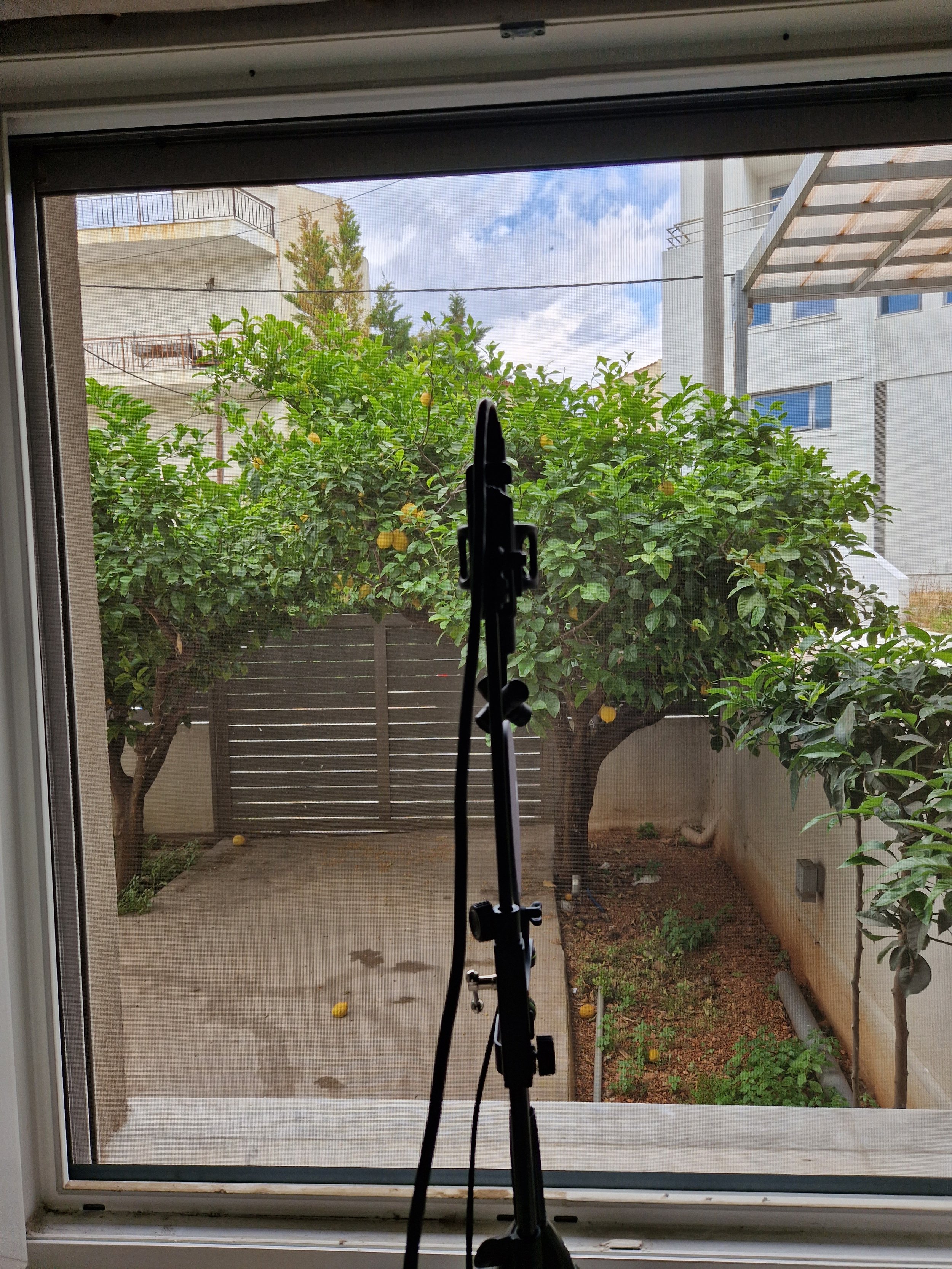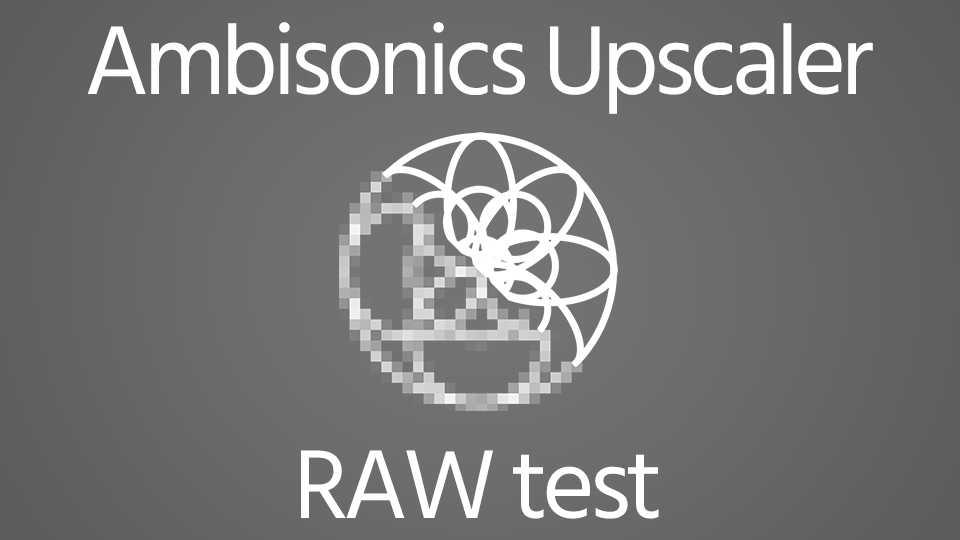The Quest to Enhancing Ambisonics.
Ever since I was first introduced to the world of sound, I've been enchanted by the intricacies of Ambisonics. The idea that sound could be captured and reproduced in a way that transcended the simple left and right of Stereo was a revelation. Yet, as I delved deeper into the discipline, I found myself longing for more – a higher order of quality, a greater degree of spatial definition, a sharper sense of clarity. What if I could write an Upscaler that could transform any 1st-Order Ambisonics recording into a high-quality 3rd-order recording? It was a daunting challenge, but one I was eager to undertake.
The journey was not easy. Months turned into a blur of research, coding, testing, and inevitable failures. There were moments when the complexity of the task seemed insurmountable, the hurdles too high. But with each setback, I found new determination. I revised code, tweaked algorithms, and tested again and again, never losing sight of my ultimate goal.
My vision was clear. I wanted an algorithm that was not only capable of transforming audio quality but also light enough to be incorporated directly into a Dolby Atmos mix project (i.e. small buffer sizes of 512 Samples). The idea of having to upscale files in separate projects, then import them back into the mix was cumbersome and counterproductive. It was vital that my algorithm could be implemented seamlessly, without any need for additional configuration or settings. It had to work, always.
As the lines of code multiplied and the algorithm took shape, I found myself constantly in awe of the ambisonics technique. The mathematical complexity, the potential for immersive soundscapes, the promise of a new level of audio quality—all of this fueled my enthusiasm. I was not only building an Upscaler but opening a door for sound designers and musicians to work with high-quality sounds at a low CPU cost and with zero need to configure anything.
Finally, after months of tireless work, my Upscaler was ready. The final test was a moment of pure elation. The algorithm worked flawlessly, enhancing the quality of 1st Order Ambisonics recordings to an astounding 3rd Order. The spatial definition was sharp, the clarity was remarkable, and the quality exceeded even my highest expectations.
I am immensely proud of this upscaling algorithm. It represents not only a significant achievement in Audio Brewers’ history and personal bucket list but also a contribution to the broader audio community. It is a tool that effortlessly enhances Ambisonics sounds, transforming them into high-quality 3rd-Order sounds without any additional effort from the user.
I can't speak for everyone, but as for me, I am planning to use this Upscaler, always. It is now an invaluable tool in my sound design and mixing arsenal. Audio Brewers’ journey in the realm of Ambisonics has been a challenging yet rewarding one, and I eagerly look forward to seeing what you will do with it.
The Test Research:
To test the Upscaler, I made a “test video” comparing the SPCMIC recording at 3rd Order Ambisonics, the RODE SOUNDFIELD in 1st Order Ambisonics, and the same RODE SOUNDFIELD, but this time Upscaled to 3rd Order Ambisonics.
Everything was recorded in one take, using Reaper, a Macbook Air M1 and as the RODE Preamps, a SoundDevices MixPre 6 II
The REAPER Session
The results were then decoded to Stereo and a RAW ‘A-B-C Comparison Video’ was made, which can be watched here:
Finally, the three WAV files were exported RAW and uploaded to https://freesound.org/people/AudioBrewers/packs/38518/, so that anybody can download them and compare the results on their own, with their own decoder (we strongly recommend ‘ab Decoder HOA’).


